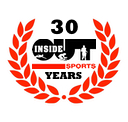Tips to consider when selecting your cycling apparel and gear:
Cycling Jersey: Sleeveless, short sleeve, long sleeve and triathlon top
- Made from sweat wicking technical fabric which allows your sweat to evaporate rather than soak into the fabric, this keeps you cooler in the summer and warmer in the winter.
- Zipper on the front makes it easy to cool down
- Pockets are located on the lower back to store your essentials such as food, phone and ID. Easily accessible without getting off bike.
- Fit: An aero jersey is designed to fit skin tight with little loose fabric to catch the wind. These jerseys will be longer in the back than the front and designed to be most comfortable when you are in the riding position. Regular fit will be much looser all over and designed to be as comfortable on the bike as off.
- Triathlon tops are sleeveless or short sleeved. The pockets will be very small and the top will fit snugly to prevent dragging in the swim and on the bike.
Shorts: Cycling shorts, bibs and triathlon
- Cycling shorts have a pad in them called a chamois. The pads vary in thickness depending on the rider’s preference and purpose. Triathlon shorts have a very thin pad so that you can swim, bike and run in the same shorts. Padding and seams are placed to decrease chaffing.
- Do not wear underwear under cycling shorts. The chamois is designed to be against your skin for decreased chaffing, comfort and moisture control
- More expensive shorts have better quality technical/breathable fabric, a better chamois and 8 fabric panels for better form fit and ease of movement.
- Bib Shorts have straps that prevent the shorts from slipping down at the back when you lean forward and provide decreased binding and pressure on your waist area.
- Inseam length is a personal preference but a longer inseam short will stay in place better and cause less chaffing on the inner thigh from your saddle.
Gloves: Short finger and long finger
- Designed for comfort and protection
- Protect the palms if you crash
- Short finger have open ended fingers for shifting and braking control
- Long finger gloves for warmth and protection
- Palms may have varied thickness padding or gel for comfort on handlebar
- Most gloves have terry cloth on the top for wiping sweat and nose as you ride
Helmets:
- Fit should be snug with no movement on your head

- Higher end helmets tend to have better ventilation and pass higher safety standards
- All the helmets we sell pass the CPSC safety standard
- Helmets should be replaced every 3 years and after any impact
Sunglasses:
- Protect your eyes from UV rays but also from dirt and sand that blow when you ride
- Keep eyes from drying out
- May come with interchangeable lens. Tint for sunny days, amber for low light conditions and clear for night.
Cycling Shoes: Road, triathlon, mountain/gravel,
- Cycling shoes have a stiff solid sole to provide a stable platform and more efficient transfer of power. Carbon soles are stiffer lighter and more expensive
- Road shoes: Usually a 3 strap closure or Boa closure system. Three holes under the ball of the foot to accommodate Road cleats. Designed to ride in and NOT walk in
- Triathlon shoes: Usually 1 or 2 strap closure for quick transition from bike to run shoes, Three hole cleat mounting, sock-like inner as they are designed to be worn without socks, drain holes in sole to help drain water after swim to bike transition.
- Mountain and Gravel shoes: Designed to ride and do limited walking in. Cleat will be recessed on the sole and will be mounted into a two hole pattern. Can be used for road riding if you want a shoe that you can walk around in.
